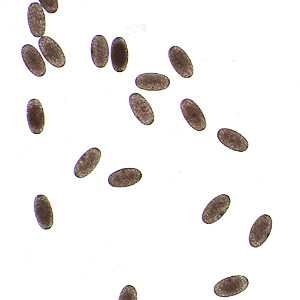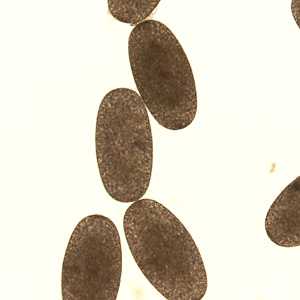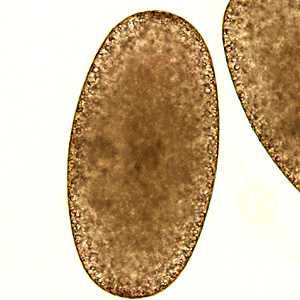
Case #297 - April, 2011
A 34-year-old man presented to his health care provider with a lesion with a dark center on his right hallux (big toe) that was inflamed and painful. Travel history included Panama and Ecuador one month prior. During the examination, the physician collected fluid that was exuding from the center of the lesion. The exudate was examined microscopically; Figures A-C shows what was observed at 20x, 40x, and 100x, respectively. The objects of interest measured on average 600 micrometers. What is your diagnosis? Based on what criteria?

Figure A

Figure B

Figure C
Case Answer
This was a case of tungiasis caused by Tunga penetrans (the chigoe flea). The morphologic features of the objects of interest (size and shape) were consistent with eggs of the flea.
More on: Tungiasis
Images presented in the monthly case studies are from specimens submitted for diagnosis or archiving. On rare occasions, clinical histories given may be partly fictitious.
DPDx is an education resource designed for health professionals and laboratory scientists. For an overview including prevention and control visit www.cdc.gov/parasites/.
- Page last reviewed: August 24, 2016
- Page last updated: August 24, 2016
- Content source:
- Global Health – Division of Parasitic Diseases and Malaria
- Notice: Linking to a non-federal site does not constitute an endorsement by HHS, CDC or any of its employees of the sponsors or the information and products presented on the site.
- Maintained By:


 ShareCompartir
ShareCompartir